| Mitsubishi Crystal Mover (Changi Airport Skytrain) | |
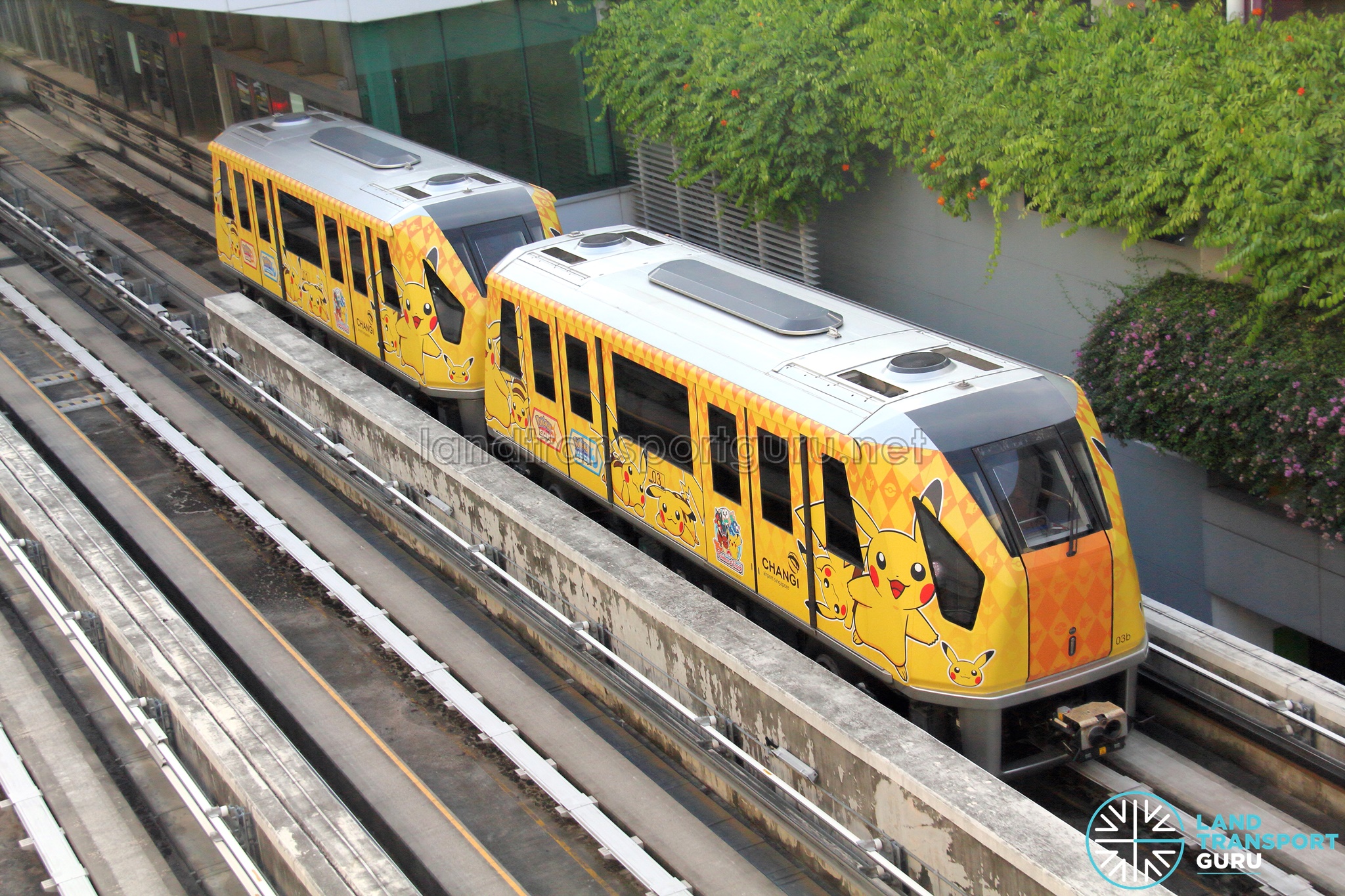 |
|
| In service | March 2006 – Present |
| Manufacturer | Mitsubishi Heavy Industries |
| Number built | Initial Order: 16 Vehicles (16 trainsets) 2016 Upgrade Order: 6 Vehicles (6 trainsets) Total: 22 Vehicles (22 trainsets) |
| Formation | 1 motor car per trainset |
| Operators | Changi Airport Group |
| Line(s) served | Changi Airport Skytrain |
| Technical Data | |
| Car body | Aluminum-alloy |
| Doors | 4 per car |
| Electrification | 750 V DC third rail |
| Track gauge | Side-mounted guideway with rubber tyres |
The Mitsubishi Crystal Mover (Changi Airport Skytrain) is a rubber-tyred automated people mover (APM) train operating on the Changi Airport Skytrain. Entering service in March 2006, these were the Changi Airport Skytrain’s second generation of rolling stock.
The Crystal Mover system was developed by Mitsubishi Heavy Industries for light rail applications, and has seen popularity in airports and light rail lines across the world. Sixteen train sets were procured, manufactured in Mihara, Japan. An additional six train sets were also procured as part of a system upgrade contract in March 2016.
The trains are capable of operating in single, double car or triple car formations.
Background
The Mitsubishi Crystal Mover was adopted by Changi Airport for the renewal and expansion of the Changi Airport Skytrain prior to the opening of Terminal 3. These trains replaced the older, first-generation AdTranz C-100 trains that served on the line from 1990 to 2006. Existing guideways between Terminals 1 and 2 were modified to accommodate the new trains, which relied on a new guideway design and power supply system.
The driverless Changi Airport Skytrain is an integral part of Airport operations, offering inter-terminal transfers for both the public and airside areas. Trains operate on dedicated grade-separated guideways and are rubber-tyred for minimized operating noise.
The trains were built as part of Mitsubishi’s Crystal Mover family of APM trains. They are guided by two side-mounted guide rails and draw power from a 750V DC third rail. These trains are also fully automated (ATO GoA 4) and do not require an attendant on board.
History
The first trains entered service in March 2006 between Terminal 1 and 2 following the completion of guideway and signalling upgrading works initiated in 2002. In November 2007, the trains began operating on new lines connecting to Changi Airport Terminal 3, as well as a new South section which serves airside passengers.
In March 2016, a contract to upgrade the Changi Airport Skytrain system was awarded to Mitsubishi Corporation and Mitsubishi Heavy Industries, Ltd. which also involves the procurement of an additional 6 Vehicles, scheduled for completion in 2019.
Part of the upgrade also comprises of an additional cabin to the following Skytrain Services:
- The public & transit two-cabin train service between Terminals 3 and 2 (Stations B & E)
- The transit one-cabin train service between Terminal 3 and Terminal 3 Gates A15 – A21 (Stations A & A South)
Current Design
The exterior of Changi Airport Skytrains are painted in a base livery of silver and grey, blending in with the color scheme of the airport terminal buildings. However, many units are decorated with colorful promotional liveries. Trains come in two interior color schemes: Blue for Public area trains, and Orange for Transit area trains.
All Skytrains have four wide-opening doors, two on each side. The interior features longitudinal seating at both ends of the car for a total of 8 seats, with a spacious standing area in the middle of the car for baggage and trolleys. At the ends of every car, an equipment housing offers a flat platform for additional seating. Trains were also fitted with two LED text displays located near the ceiling which display travel information, and two media screens displaying Airport promotional material.
Emergency Exits are located at both ends of every train, with a ramp that can be deployed in an emergency. Within the cabin, Intercom Units enable passengers to speak with staff in an emergency.
Train Formation
Trains can be formed of either one car, two cars or three cars coupled together. The three car formation is only used after the Skytrain system upgrade which was completed in 2019.
Gallery:
External Links & References
- Mitsubishi Heavy Industries Crystal Mover C810 – Wikipedia
- Mitsubishi Crystal Mover (C810) – SGTrains
- Hairline cracks found on 11 Sengkang-Punggol LRT trains – Straits Times
- Skytrain at Changi Airport to get systems upgrade, more cabins – Straits Times
Back to Trains
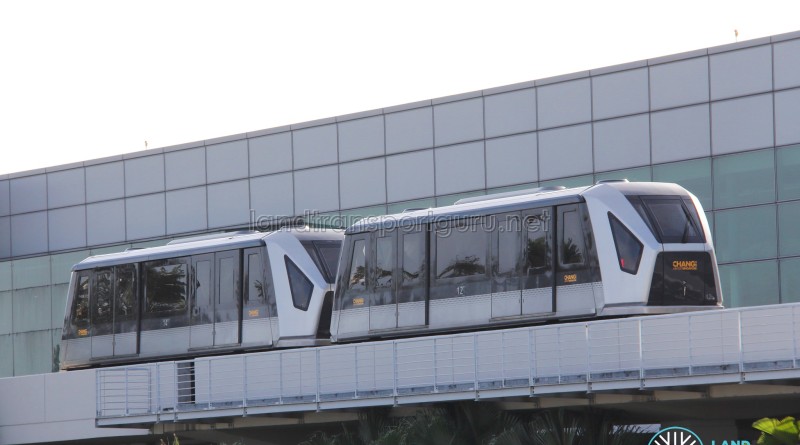
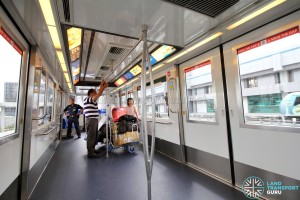
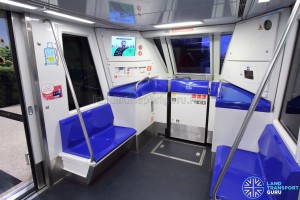
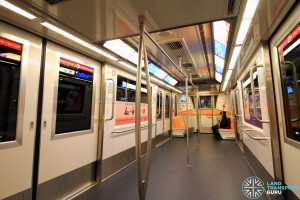
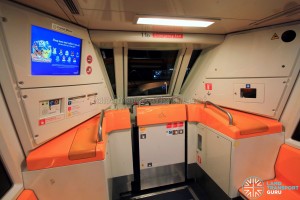
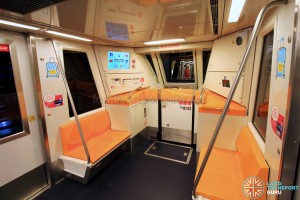
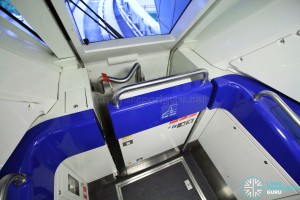
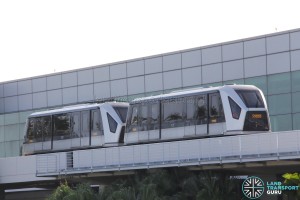
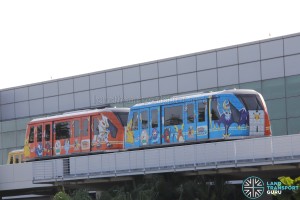
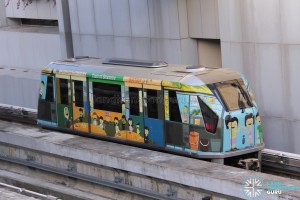
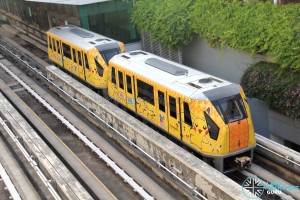
Then Changi Airport Skytrain 17 new train the similar as C810B will be delivered to Changi Airport by from 2027 to 2030 and replaced retired Changi Airport Skytrain 16 old train then the Changi Airport 17 new train the similar as C810B will have 3 car and 2 car then first 3 new train the similar as C810B will be delivered by 2027 first
For Changi Airport Skytrain 16 old train will be retired and Scrapped by 2026 and replaced the 17 new train car the similar as C810B by 2026 then for two car set 02/03 the 1 set will be transfer back to from T2 to T1 inside departure then for T2 to T1 the for 2 car set 02/03 the 1 set will be scrapped by 2026 first then the rest all 14 old train will be retired and scrapped by 2028